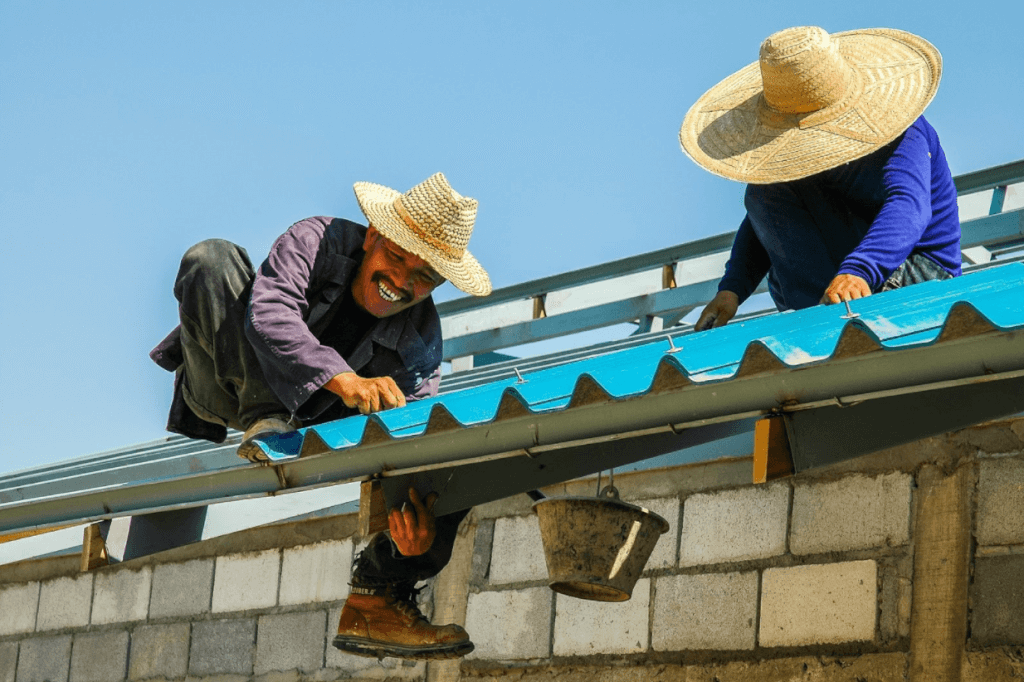A roofing emergency can strike at any time—whether due to a severe storm, fallen tree, or sudden leak. When your home’s first line of defense is compromised, quick action is essential to prevent further damage. Knowing what to do during a roofing crisis can save you time, money, and stress. This article will walk you through the essentials of emergency roof repair and how to handle it effectively.
1. What Is Considered a Roofing Emergency?
A roofing emergency is any situation where your roof is suddenly damaged and can no longer protect your home from the elements. Common scenarios include:
-
Storm damage from high winds, hail, or heavy rain
-
Tree limbs or debris falling onto the roof
-
Sudden, severe roof leaks
-
Partial roof collapse
-
Fire damage
These situations can lead to interior water damage, electrical issues, and even structural hazards if not addressed immediately.
2. First Steps to Take After Roof Damage
If your roof is suddenly damaged, stay calm and take these initial steps:
-
Ensure safety first: Evacuate the area if there’s risk of collapse or electrical hazards. Don’t attempt to climb onto the roof during a storm or at night.
-
Contain the leak: Place buckets or containers under active leaks and move furniture or valuables away from the affected area.
-
Document the damage: Take photos or videos of the roof and any interior damage. This will help with your insurance claim.
-
Call a professional: Contact a licensed JP Carroll Roofing contractor who offers emergency repair services. They can assess the damage and begin temporary repairs quickly.
3. Temporary vs. Permanent Repairs
In emergency situations, roofers often perform temporary repairs first to stop the immediate threat, followed by permanent repairs when conditions allow.
Temporary repairs may include:
-
Tarping the roof to prevent water entry
-
Patching holes or missing shingles
-
Sealing flashing or vents
Permanent repairs could involve:
-
Replacing damaged shingles or tiles
-
Repairing underlayment and sheathing
-
Rebuilding collapsed or sagging areas
Acting fast with temporary fixes buys you time and protects your home from worsening damage.

4. Should You Call Your Insurance Company?
Yes. If your roof is damaged in an emergency, notify your homeowner’s insurance provider as soon as possible. Most policies cover sudden and accidental roof damage from covered perils, such as storms or fallen trees.
To file a successful claim:
-
Provide your documentation (photos, videos, receipts)
-
Work with a roofing contractor experienced in insurance claims
-
Request a detailed estimate from your roofer to submit with your claim
Avoid permanent repairs until your insurer inspects the damage unless emergency repairs are necessary to prevent further loss.
5. How to Choose an Emergency Roofing Contractor
Not all roofing companies handle emergencies. Choose one that:
-
Offers 24/7 emergency response
-
Is licensed, insured, and experienced
-
Has good local reviews and references
-
Can assist with your insurance claim
-
Offers clear, upfront pricing—even in emergencies
Beware of “storm chasers” who appear after big storms and disappear just as quickly. Always verify credentials before hiring.
6. Preventing Future Roofing Emergencies
While not all emergencies can be avoided, you can reduce the risk by:
-
Scheduling regular roof inspections
-
Trimming overhanging tree branches
-
Cleaning gutters and downspouts
-
Replacing old or worn roofing materials
-
Addressing minor issues before they escalate
A proactive approach keeps your roof strong and storm-ready.
Conclusion
A roofing emergency can be frightening, but knowing what to do makes all the difference. Quick action, temporary protection, and professional help can safeguard your home and minimize damage. Whether it’s a leak or a structural collapse, understanding emergency roof repair empowers you to respond effectively and restore your home safely.
Comments on “Emergency Roof Repair: What You Need to Know”